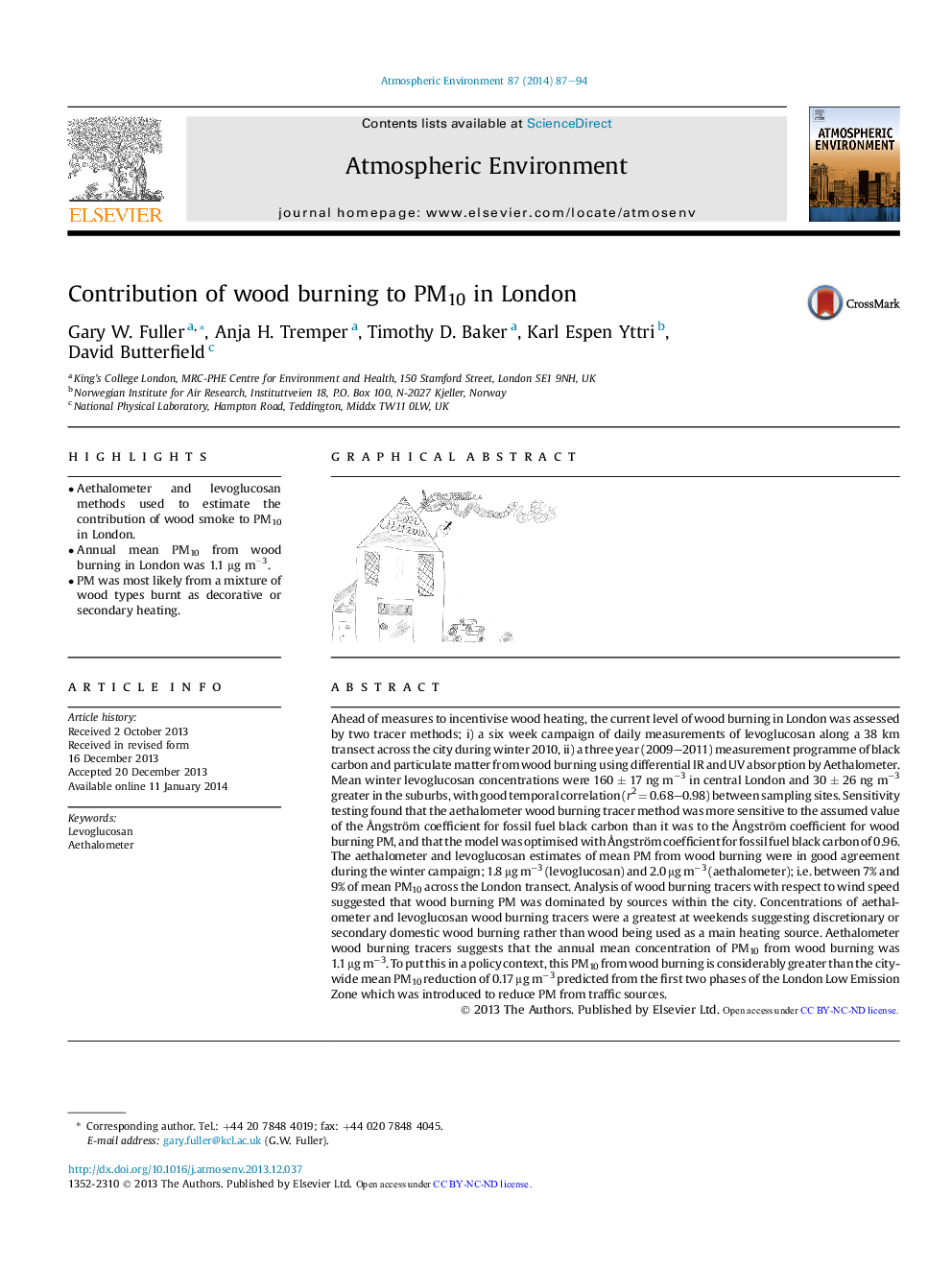| کد مقاله | کد نشریه | سال انتشار | مقاله انگلیسی | نسخه تمام متن |
|---|---|---|---|---|
| 6340350 | 1620384 | 2014 | 8 صفحه PDF | دانلود رایگان |

- Aethalometer and levoglucosan methods used to estimate the contribution of wood smoke to PM10 in London.
- Annual mean PM10 from wood burning in London was 1.1 μg mâ3.
- PM was most likely from a mixture of wood types burnt as decorative or secondary heating.
Ahead of measures to incentivise wood heating, the current level of wood burning in London was assessed by two tracer methods; i) a six week campaign of daily measurements of levoglucosan along a 38 km transect across the city during winter 2010, ii) a three year (2009-2011) measurement programme of black carbon and particulate matter from wood burning using differential IR and UV absorption by Aethalometer. Mean winter levoglucosan concentrations were 160 ± 17 ng mâ3 in central London and 30 ± 26 ng mâ3 greater in the suburbs, with good temporal correlation (r2 = 0.68-0.98) between sampling sites. Sensitivity testing found that the aethalometer wood burning tracer method was more sensitive to the assumed value of the à ngström coefficient for fossil fuel black carbon than it was to the à ngström coefficient for wood burning PM, and that the model was optimised with à ngström coefficient for fossil fuel black carbon of 0.96. The aethalometer and levoglucosan estimates of mean PM from wood burning were in good agreement during the winter campaign; 1.8 μg mâ3 (levoglucosan) and 2.0 μg mâ3 (aethalometer); i.e. between 7% and 9% of mean PM10 across the London transect. Analysis of wood burning tracers with respect to wind speed suggested that wood burning PM was dominated by sources within the city. Concentrations of aethalometer and levoglucosan wood burning tracers were a greatest at weekends suggesting discretionary or secondary domestic wood burning rather than wood being used as a main heating source. Aethalometer wood burning tracers suggests that the annual mean concentration of PM10 from wood burning was 1.1 μg mâ3. To put this in a policy context, this PM10 from wood burning is considerably greater than the city-wide mean PM10 reduction of 0.17 μg mâ3 predicted from the first two phases of the London Low Emission Zone which was introduced to reduce PM from traffic sources.
140
Journal: Atmospheric Environment - Volume 87, April 2014, Pages 87-94